La Cámara de Comercio
On 23 March 1915 the town council in Oaxaca considered the problem of the lack of bonos and coins and proposed to make an issue of bonos of 5, 10 and 20 centavos, guaranteed by the corporationEl Dictamen, Tomo XVII, Num 1464, 30 March 1915. However, they seem to have delegated the task to the local Cámara de Comercio.
This produced a series of three values, dated March 1915. These were accepted by the major casas comerciales in any amount and could be exchanged in multiples of five pesos. They were signed by Luis G. Bellon as Tesorero, Herminio Franco as Secretario, or Joaquín [ ][identification needed].

The Bellón brothers' Las Fábricas de Francia'
|
Luis G. Bellón was a French merchant who with his brother owned two department stores, ‘Las Fábricas de Francia’ and ‘La Ciudad de México.’ Bellón provided the gold for the iconic $60 revolutionary coin. |
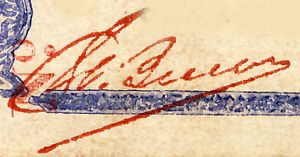 |
|
Herminio Franco ran a restaurant and cantina, ‘Las Mesitas del Edén’, located in the portal de Flores. On 7 June 1924 General Juan Andreu Almazán named him one of his Consejo de Administración Civil in the state capital{footnote}Periódico Oficial, Tomo VI, Núm. 5, 14 June 1924. In 1927 he has a casa comercial at Avenida Hidalgo núm. 45Periódico Oficial, Tomo IX, Núm. 53, 31 December 1927. |
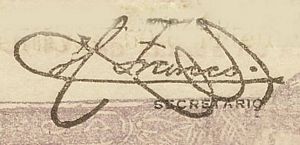 |
| Joaquín [ ] | 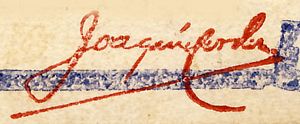 |
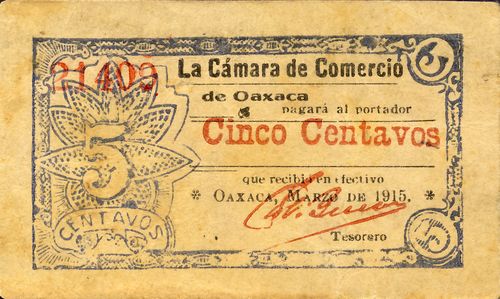
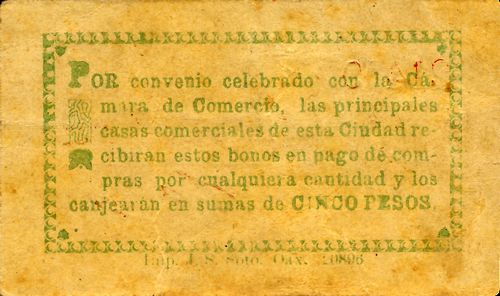 M3439 5c Cámara de Comercio
M3439 5c Cámara de Comercio
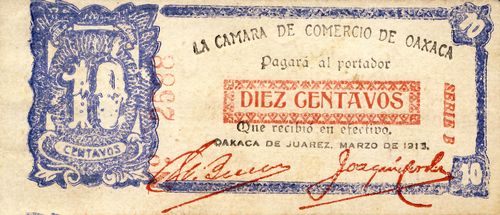
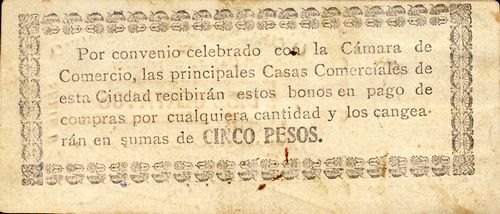 M3442 10c Cámara de Comercio
M3442 10c Cámara de Comercio
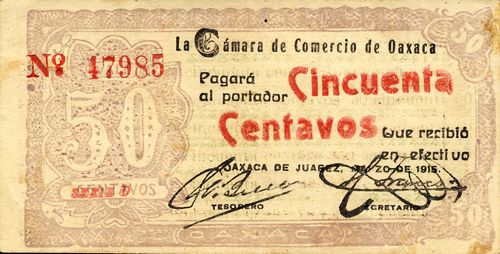
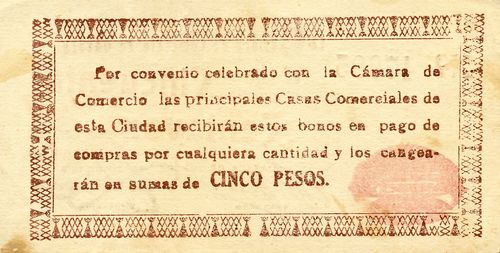 M3443 50c Cámara de Comercio
M3443 50c Cámara de Comercio
Known series are:
| Series | from | to | total number |
total value |
||
| 5c | includes numbers 21409 to 32729CNBanxico #11815 | |||||
| 10c | B | includes number 2588 | ||||
| 50c | ||||||
| A | includes number 7664 | |||||
| B | includes number 13450 | |||||
| C | includes number 22756CNBanxico #5792 | |||||
| D | includes numbers 18807footnote}CNBanxico #5793 to 47985 | |||||
| E | includes number 37690 | |||||
| F | includes number 7959CNBanxico #11820 | |||||
| G | includes number 6024CNBanxico #11821 |
Inevitably there were some typos
'INO PESOS' instead of 'CINCO PESOS'
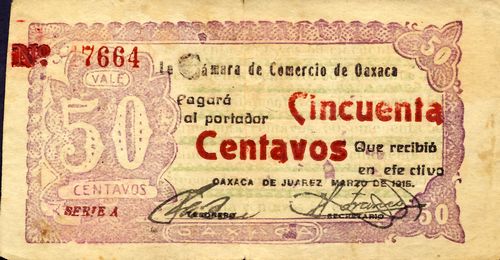
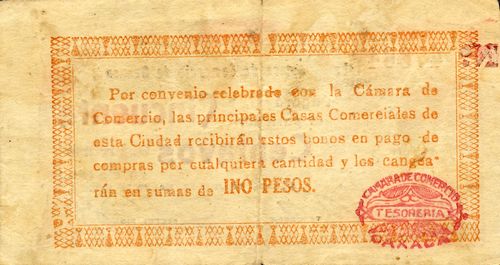 M344b 50c Cámara de Comercio INO
M344b 50c Cámara de Comercio INO
‘recibó’ instead of ‘recibió’

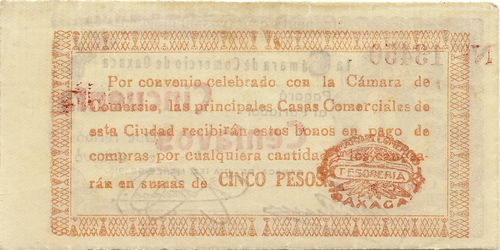 M344ba 50c Cámara de Comercio recibó
M344ba 50c Cámara de Comercio recibó
'aPgara' instead of 'Pagara'
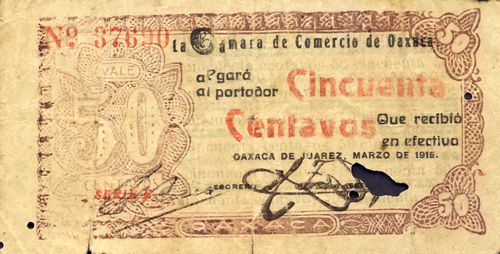
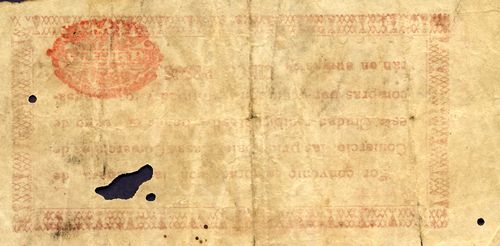 M344c 50c Cámara de Comercio aPgara
M344c 50c Cámara de Comercio aPgara
On the reverse of the series D note “principal” appears in the singular, i.e. “ .. las principal Casas Comerciales …”
On 7 April the local correspondant for El Pueblo reported that a new issue of 5, 10 and 20 centavos bonos was expected to replace the ones which after three (sic) months had become unusableEl Pueblo, 13 April 1915. This second issue was dated April 1915. For the 10c value 'La Cámara de Comercio' is found in both large and small type.
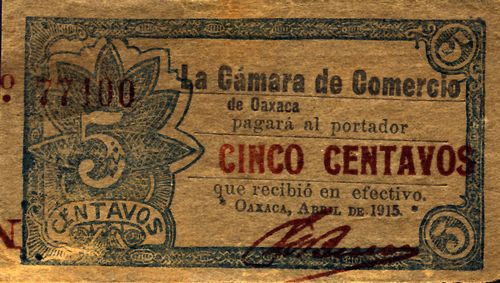
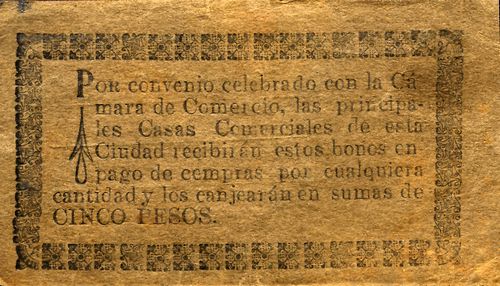
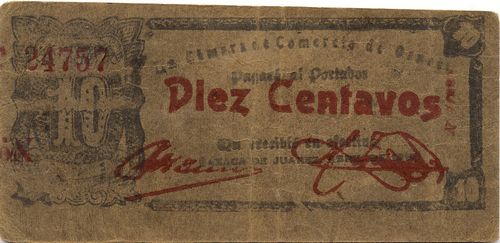
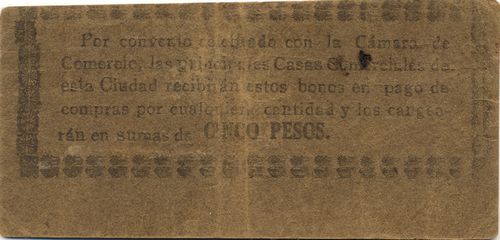
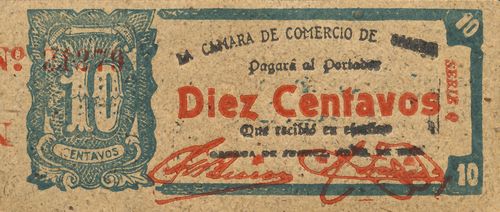
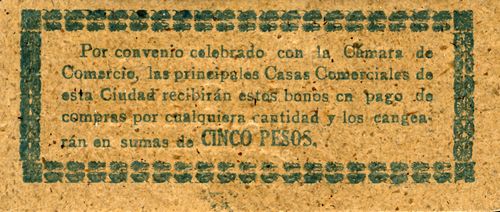
| Series | from | to | total number |
total value |
||
| 5c | includes numbers 53170 to 79405CNBanxico #11816 | |||||
| small legend 10c |
I | includes number 5285CNBanxico #11817 | ||||
| K | ||||||
| N | includes number 24757 | |||||
| large legend 10c |
B | includes number 2497CNBanxico #11818 | ||||
| P | includes number 17000 | |||||
| Q | includes numbers 21379 to 47548CNBanxico #5791 |
Again there were some typos
'efeciivo' instead of 'efectivo' and 'canjerán' instead of 'canjearán'
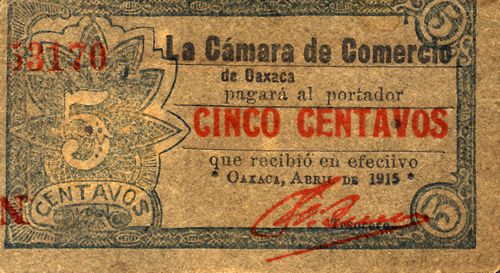
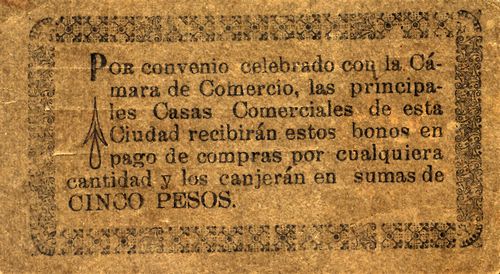
'canjerán' instead of 'canjearán'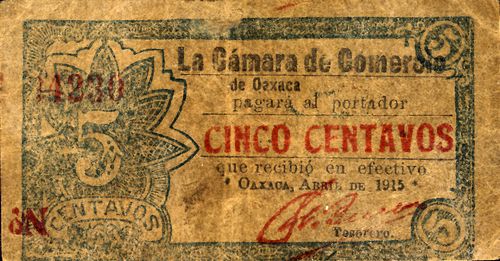
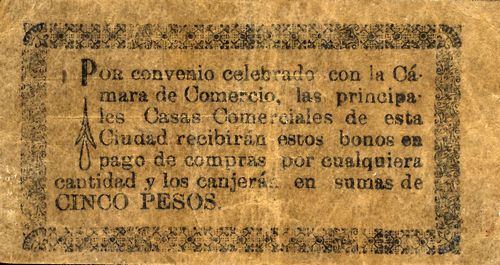
'INO PESOS' instead of 'CINCO PESOS'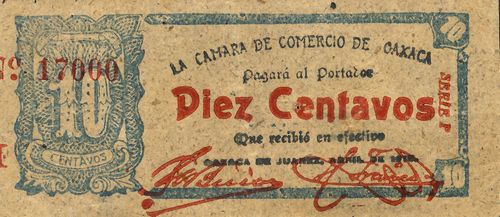
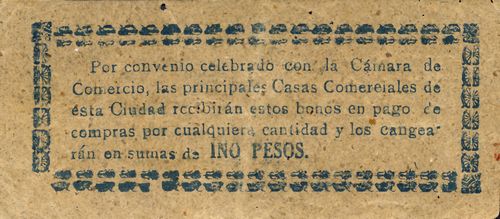
On 14 April the Jefe Político wrote to Ricardo Delgado, the Inspector General de Policía, that he had become aware that many of the traders in the "Porfirio Díaz" Market were hoarding the 5c and 10c bonos in order to resell them. He recommended that the Inspector General order a search in the market stalls to verify the truth of the complaint and consign all the people guilty of hoarding to his Headquarters. Delgado acknowledged the request the following dayAO, Fondo Gobierno, sección Secretaría del Despacho, serie Correspondencia, caja 4544, exp.4.
On 16 September governor Dávila, in his informe to Congress, stated that because of the scarcity of fractional currency, his government has tolerated the issue of bonos and vales that circulated in commerce. Until the Mint produced enough coinage he had ordered the Cámara to inform the Government of all the agreements and provisions it has issued, relating to the issue, circulation, exchange and amortization of its bonos. The Cámara had already made several deposits in the Treasury, in order to guarantee its notesAO, Fondo Gobierno, sección Secretaría del Despacho, serie Informes, caja 4825, exp.4. On 16 October the government again acknowledged these issues. Governor Dávila stated that, as the scarcity of fractional currency had produced difficulties and inconvenience and the Mint had not yet produced enough coinage, he accepted the Chamber’s proposal of 7 April to the so-called Constitutionalist Government’s Secretaría de Hacienda, and authorised it to issue and put into circulation 5c, 10c and 50c bonos, to an amount sufficient to meet the needs of the market. The Chamber would guarantee its issues with a deposit in the State Treasury in currency or paper money and in an amount equal to the total value of each issue. The Chamber should produce a statement of all the bonds that it had issued to date, with the date of issue, series, signatures and number, and for each new issue, would inform the Government of the number and type of bonos that it intended to issue, so that the printing was authorized and an Interventor designated, whose signature would appear on the same. To put the bonos into circulation, the Chamber's Treasurer would exchange them for notes in amounts not less than five pesos, being able to charge up to two percent for the exchange to cover expenses of the issue. The Chamber would then deliver the cash every ten days to the Treasury. The Treasury would exchange bonos that became unusable, and amortise the issue when it deemed it convenient in view of the needs of commerce and the general public. Redeemed bonos would then be incineratedPeriódico Oficial, Tomo XXXV, Núm. 83, 16 October 1915.
The Cámara was dissolved in 1916 but a group of leading businessmen, including Herminio Franco and the Bellón brothers, combined to restart it in June 1920Mercurio, 23 June 1920..
